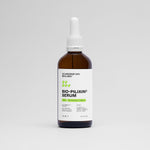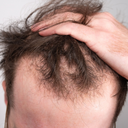Hair loss can be a distressing experience for many individuals, particularly when it impacts the hairline. Among various treatments available, minoxidil has emerged as a popular choice for those seeking to regain lost hair. This article delves into the effectiveness of minoxidil in regrowing hairlines, providing insights and information to help you make an informed decision.
Table of content
Will minoxidil regrow hairline?
Yes, minoxidil can help regrow hairline for some individuals. It is a topical treatment that has been clinically proven to stimulate hair follicles, promoting hair regrowth in both men and women experiencing androgenetic alopecia, commonly known as male or female pattern baldness. However, the results can vary based on individual factors such as the extent of hair loss, the duration of treatment, and personal response to the medication.
Minoxidil works by increasing blood flow to hair follicles, which can revitalize shrunken hair follicles, leading to thicker and longer hair strands. Users typically apply it directly to the scalp, particularly in areas where hair thinning is noticeable. It is important to note that while many users report positive outcomes, minoxidil does not work for everyone, and it is most effective when used in the early stages of hair loss.
As your leading source for hair health information over the past 4 years, we never compromise on accuracy. When it comes to your health, you deserve information you can truly rely on - and earning your trust is our top priority.
Here's how Scandinavian Biolabs ensures every piece of content meets the highest standards of accuracy and integrity:
- Credentialed Experts: Our reviewers are actively practicing doctors and medical researchers
- Stringent Reviews: Content undergoes rigorous editing by subject specialists and review by a practicing doctor.
- Evidence-Based: We rely on well-established research from trusted scientific sources like peer-reviewed journals and health authorities.
- Full Transparency: Our editorial standards, writer credentials, reviewer credentials, correction process, and funding are all publicly documented.
- Independent Voice: While we do promote products, we operate in a vacuum to business operations. Our main goal is just an unwavering commitment to providing medically-sound guidance.
You can count on Scandinavian Biolabs to consistently deliver the trustworthy health information you deserve. Read our Editorial Standards.
Understanding Minoxidil
Minoxidil is an FDA-approved medication for treating hair loss. Originally developed as a treatment for high blood pressure, researchers discovered its side effect of promoting hair growth, leading to its repurposing as a topical solution for hair regrowth. Available in both liquid and foam formulations, minoxidil is easy to apply and is typically available over-the-counter.
How to Use Minoxidil Effectively
To maximize the benefits of minoxidil for hairline regrowth, it is crucial to follow the recommended usage guidelines:
- Consistency: Apply minoxidil twice daily to the affected areas of the scalp for optimal results.
- Clean Scalp: Ensure your scalp is clean and dry before application to enhance absorption.
- Dosage: Use the recommended dosage as specified on the product label to avoid side effects.
- Patience: Results may take time; it can take several months of consistent use to notice significant improvements.
Expected Results and Timeline
Many users begin to see results within 12 weeks of starting minoxidil treatment, with continued improvement often seen for up to a year. It is common to experience initial shedding of hair as old hairs make way for new growth — this is a normal part of the hair regrowth cycle. Users should maintain realistic expectations and understand that results can vary significantly from person to person.
Possible Side Effects
While minoxidil is generally well-tolerated, some individuals may experience side effects, including:
- Scalp irritation or itching
- Dryness or flaking of the scalp
- Unwanted facial hair growth in women
- In rare cases, systemic effects like rapid heart rate or swelling
If you experience severe side effects or have concerns, it is essential to consult with a healthcare professional.
Who Should Use Minoxidil?
Minoxidil is suitable for adults experiencing hair loss due to androgenetic alopecia. It is important for potential users to consult with a healthcare provider to determine if minoxidil is the right treatment for their specific condition, especially for individuals with underlying health issues or those taking other medications.
Alternative Treatments for Hair Loss
While minoxidil is a popular option, several alternatives are available for hair regrowth, including:
- Finasteride: An oral prescription medication that can help prevent hair loss in men.
- Hair Transplant Surgery: A surgical option for more permanent hair restoration.
- Low-Level Laser Therapy: A non-invasive treatment that uses laser light to stimulate hair follicles.
Conclusion
In summary, minoxidil can effectively regrow hairline for many individuals suffering from hair loss, particularly when used consistently and in the early stages of hair thinning. While results vary and patience is necessary, it remains one of the most popular over-the-counter treatments available. If you are considering minoxidil, discussing your options with a healthcare provider can help ensure that you choose the best course of action for your hair restoration journey.
Minoxidil Side Effects Got You Down? There's A Plant-Based, Drug-Free Option.
Minoxidil can be a double-edged sword for hair regrowth. It works, but often comes with scalp irritation and unwanted hair growth. Maybe you'd prefer a gentler approach altogether?
The good news is, effective alternatives exist. Many simply aren't aware of them.
Here's what you likely crave:
- Soothe the Scalp: Ditch the itch and irritation.
- See Real Results: Noticeable hair regrowth, not just less shedding.
- Safe for Everyday Use: A trusted product you can rely on.
Bio-Pilixin® to the Rescue
Bio-Pilixin® is a clinically tested, drug-free answer to your hair loss woes.
- Gentle Yet Effective: Powerful results without harsh chemicals.
- Help Reduce Shedding, Increase Growth: Studies show significant hair regrowth for users.
- Safe & Plant-powered Formula: Confidence you can use Bio-Pilixin® daily.
Bio-Pilixin® offers the powerful, yet gentle approach you've been searching for.
Read more:






